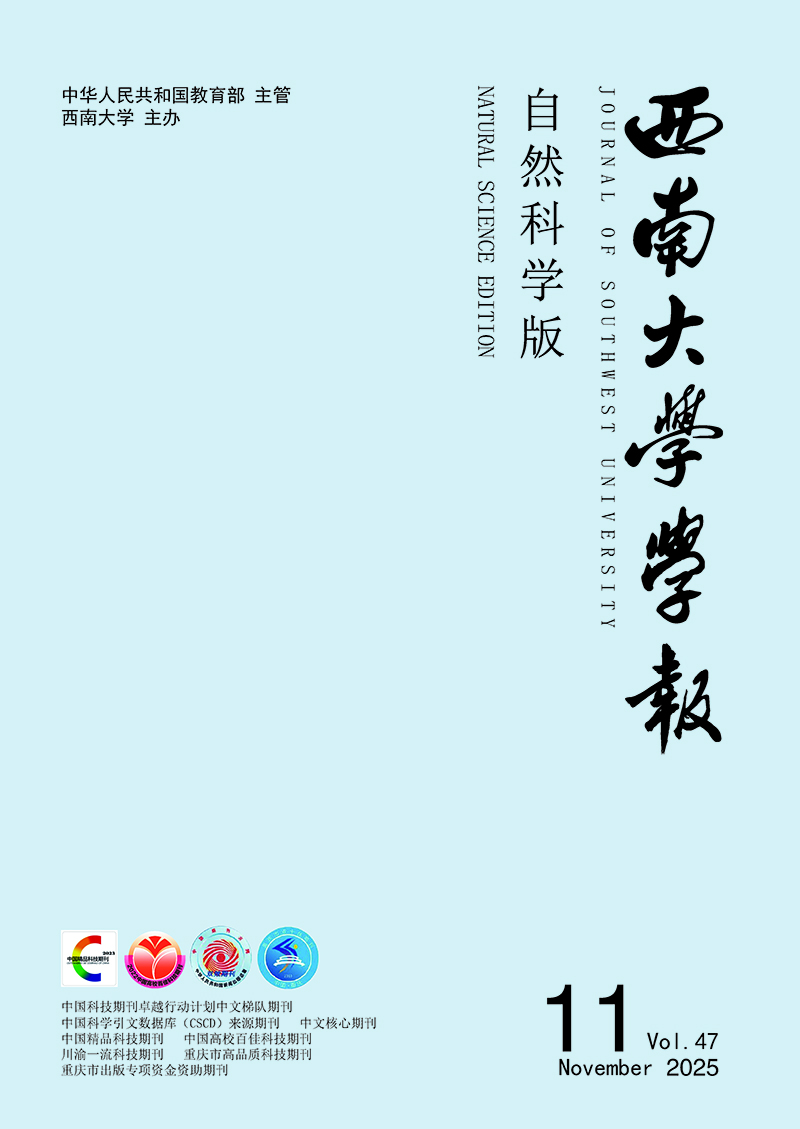-
微孢子虫是一大类专性细胞内寄生的单细胞真核生物[1].微孢子虫具有广泛的宿主范围,它们可以感染几乎所有种类的动物,包括人类[2].微孢子虫感染已被认为是人类微孢子虫病的致病原因.这些感染大多数发生在免疫力低下的患者身上,例如艾滋病患者、癌症患者以及移植受者中[3].人微孢子虫感染主要是由毕氏肠微孢子虫(Enterocytozoonbieneusi,E.bieneusi)、海伦脑炎微孢子虫(Encephalitozoon hellem)、肠脑炎微孢子虫(Encephalitozoon intestinalis)等.其中,最常见的是毕氏肠微孢子虫(Enterocytozoonbieneusi),艾滋病患者中高达50%原因不明的慢性腹泻症状很可能就是E.bieneusi造成的[4-5].这种微孢子虫在肠外的传播不那么普遍,但越来越多的证据表明,在眼睛、呼吸道和人体其他部位也可能存在该种微孢子虫[6-7].
毕氏肠微孢子虫是临床上感染人类最重要的微孢子虫,同时也是能感染其他大型哺乳类动物的微孢子虫[8].其感染畜类如猪、牛、羊等,并引起人畜共患微孢子虫病,是对公共卫生健康的一大威胁[9-11].尽管控制毕氏肠微孢子虫感染对人类健康很重要,但对该病原的感染机理研究非常有限,目前的研究进展仍局限在流行病学调查和基因型鉴定方面.主要原因是E.bieneusi难以在体外纯化和繁殖[12].孢子与其他肠道微生物混在一起,相对于其他微生物,孢子的含量很低,其识别过程复杂且耗时.到目前为止,从粪便中纯化的E.bieneusi,其最佳纯度占其他肠道微生物还不到10%[13].这样的纯度导致其纯化的孢子量几乎不能维持随后的体外培养.缺乏E.bieneusi孢子的来源已经限制了该病原体的基础研究、诊断试剂以至新型治疗策略的运用.
在本研究中,我们设计了一种从患腹泻病症的猪粪便中纯化E.bieneusi孢子的新方法.该新方法在先前报道方法的基础上[13-14],经过了多个步骤的改良,以提高E.bieneusi孢子的最终产量和纯度.改良的内容包括:更多次数的筛网过滤、Percoll等密度离心以及蔗糖梯度离心,辅以PCR和韦伯氏染色法进行分析.通过此改良方法所获得的纯度更高的毕氏肠微孢子虫,为后续开展针对其致病机理等更深入的研究提供了基础.
HTML
-
猪粪便样品是从西南大学兽医科学工程研究中心的含水腹泻猪粪中收集的.将粪便保存在一次性塑料容器中,然后使用特异引物通过PCR筛选E.bieneusi孢子呈阳性的样品.阳性水样粪便将进行进一步处理.
-
猪粪样品中E.bieneusi阳性粪便样品经过连续筛网过滤,即45目(325 mm)筛网过滤,紧接着经过80目(180 mm)筛网过滤.这样,粪便中除微生物以外的大部分残渣都被过滤掉了,样品杂质更少.
-
通过盐浮选步骤进一步富集孢子.将1体积的粪便样品(10 mL)与2体积的饱和氯化钠溶液(20 mL)混合,并将该混合物在室温下以1 000 g离心15 min.这个过程为我们提供了3个部分的样品:顶带、沉淀和悬浮液.然后,我们通过PCR和韦伯氏染色验证E.bieneusi的存在.将悬浮液离心收集沉淀,并用蒸馏水洗涤5次,重悬以进行进一步处理.
-
等密度Percoll(80%)和连续蔗糖梯度(35%~60%)离心,以进一步富集样品中的孢子.将1体积的悬浮液与9体积的80%Percoll混合.然后在室温下以10 300 g离心20 min.通过PCR和韦伯氏染色检测E.bieneusi的存在,然后收集含有病原体的部分并重悬.将重悬样品添加到蔗糖连续梯度中,并在4 ℃下以78 600 g离心2 h.通过PCR和韦伯氏染色验证E.bieneusi的存在.
-
使用Qiagen DNA提取试剂盒(Qiagen,Germany),按照说明书从样品中提取总DNA.使用专门针对微孢子虫设计的引物,对所获得的样品进行PCR扩增.微孢子虫通用引物序列为GForward:CACCAGGTTGATTCTGCCTGAC;GReverse:CCTCTCCGGAACCAAACCCTG.E.bieneusi特异引物序列为SForward:TCGGCTCTGAATATCTATGG;SReverse:ATTCTTTCGCGCTCGTC(表 1). PCR双重阳性且测序结果正确的样品鉴定为含有E.bieneusi的样品.
韦伯氏染色方法:将样品置于适量铬变素染色液中,在室温下放置90 min,染色液必须完全覆盖样品.在室温下,置于醋酸酒精中洗10 s以上.在96%的酒精中固定脱水5 min,随后在100%的纯酒精中固定脱水10 min,干燥后在二甲苯中固定、脱水、透明10 min.然后用甘油和指甲油密封,以备光学显微镜观察.经韦伯氏染色后的微孢子虫孢子将呈粉红色,长度为1~2 μm.
1.1. 收集猪粪样本
1.2. 筛网过滤
1.3. 盐浮选
1.4. Percoll和蔗糖离心
1.5. PCR和韦伯氏染色
-
猪粪样品先经过45目(325 mm)筛网过滤,紧接着经过80目(180 mm)筛网过滤.过滤步骤可有效去除大量食物颗粒和碎屑,经此过程后样品杂质极大减少.接下来,盐浮选后我们得到3个部分的样品:顶带、沉淀和介于两者之间的悬浮液.然后,我们通过PCR和韦伯氏染色验证了E.bieneusi的存在.结果表明,中间悬浮液富集了E.bieneusi的孢子(图 1).
然后将样品进行80%等密度Percoll纯化.离心后,样品分为4个部分(图 2).通过PCR和韦伯氏染色,我们确认了沉淀上方两个带含有干净的孢子.然后将这两部分合并在一起,进行蔗糖连续梯度离心.蔗糖连续梯度离心法得到4个部分的样品:顶部带、中部带、底部带和沉淀.通过PCR和韦伯氏染色,我们鉴定出大部分E.bieneusi孢子在底部带中(图 3).
-
使用当前改良的方法,在样品所有微生物中纯化的孢子产率高达15%(图 4).与以前报道的孢子产生约为9%的方法相比,我们的改良方法将E.bieneusi的孢子纯度提高了近1倍.这是从粪便中富集和纯化E.bieneusi孢子的极大改进,将大大促进该领域的研究.
-
使用扫描电子显微镜(SEM)以及透射电镜(TEM)进一步观察纯化的E.bieneusi孢子.在显微镜下,孢子大小为1~2 μm,并且能观察到孢子内的微管结构(图 5).
2.1. 毕氏肠微孢子虫的富集和纯化
2.2. 纯化效率
2.3. 电子显微镜下的E.bieneusi孢子
-
我们在这里设计了一种从猪粪便中分离纯化毕氏肠微孢子虫的改良方法,用于从猪的大量含水腹泻粪便中纯化E.bieneusi孢子.在此之前,所报道的方法多是直接使用等密度percoll离心和蔗糖密度梯度离心从HIV患者的粪便中纯化E.bieneusi孢子,但这些方法效果不佳.例如,其中一个步骤设计在10 ℃下离心24 h[13],这非常耗时并且纯化的孢子量低.更重要的是,最终产物中所含的E.bieneusi孢子纯度非常低.根据这些报道的方法,从粪便中提取E.bieneusi孢子的回收率为1.7%,最高也只可达9.1%.这种低纯度的病原体使得随后的体外培养非常困难[15],为了获得更多更干净的E.bieneusi孢子,迫切需要一种改进的方法.
在上述基础上,我们改良出了一种新颖的从粪便中分离纯化E.bieneusi孢子的方法.首先,使用连续的筛网去除粪便中的大颗粒和碎屑,此步骤能极大地提高样品的纯度,还能提高随后percoll和蔗糖密度梯度离心分离步骤的效率.我们做出的第2个改良是percoll等密度离心紧接着蔗糖密度梯度离心.通过适当的调整介质浓度和离心速度,我们可以大大减少离心时间,并且提高分层效率.通过这样的改良,可以为我们节省1 d的处理时间,总用时从24 h降低到5 h.最重要的是,这种改良并没有牺牲产量,还大大增加了最终样品的纯度,原因可能是减少处理时间可以避免干扰并提高纯度.
本方法所进行的另一项改进是,在整个过程中都同时使用了PCR和韦伯氏染色进行检测,以确保分离步骤的准确性和目的性,因此大大提高了最终产物中E.bieneusi孢子的纯度.目前鉴定微生物的主要方法是基于ITS测序,结合形态学观察[16].因此,我们同时使用了微孢子虫的通用引物和E.bieneusi特异性引物,以确保在每个步骤和每个分离样品部分中都存在E.bieneusi孢子.此外,韦伯氏染色对于E.bieneusi孢子的染色特异性非常高[14].孢子显示为粉红色,中间淡染或苍白,这很容易与样品中的其他微生物区分开.传统的染色方法如荧光增白剂染色法,对微孢子虫特异性不强.因为荧光增白剂标记的是几丁质,而几丁质也存在于粪便里大量存在的酵母的细胞壁中.因此,将PCR和韦伯氏染色相结合可以避免假阳性,从而显著提高E.bieneusi孢子的最终纯度.
综上所述,我们改良的方法新颖且省时,同时极大地提高了粪便样品提纯最终产物中毕氏肠微孢子虫的纯度.有了更多纯化的E.bieneusi孢子,研究人员将有更多机会在体外培养这种病原体,并对其进行研究,从而制定出更有效的预防和治疗策略以改善人类福祉.











 DownLoad:
DownLoad: